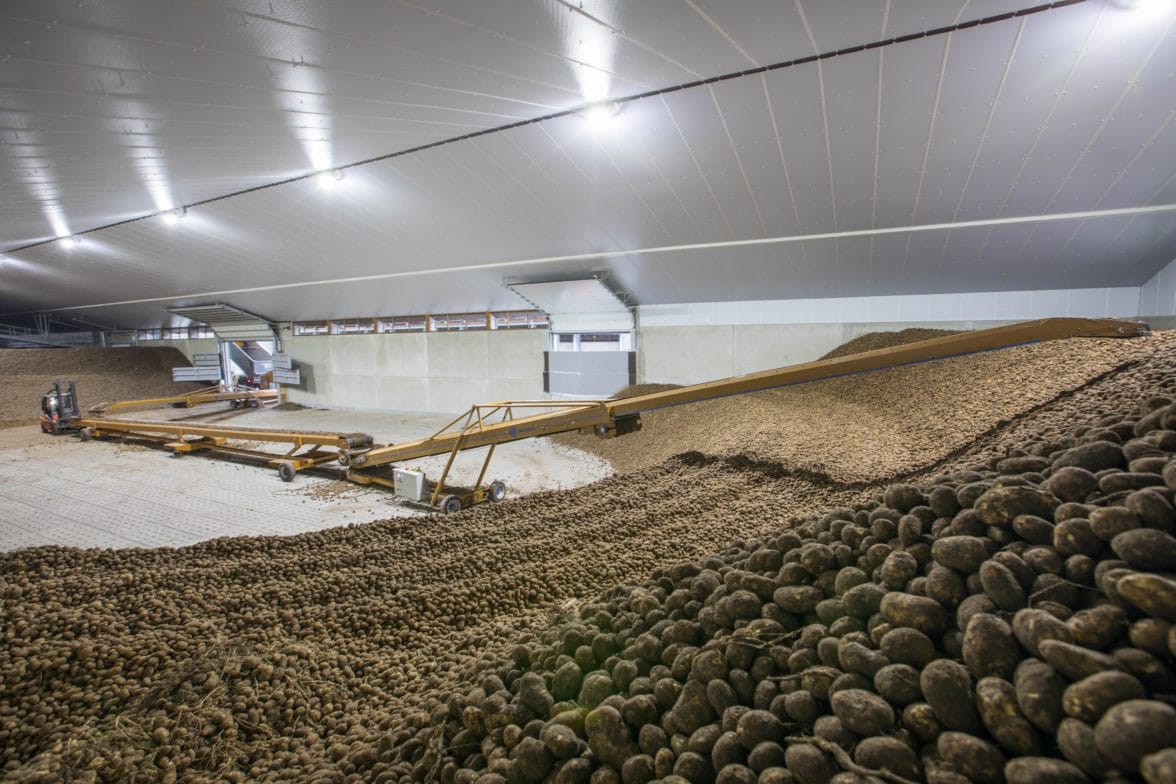Tips on how to use ventilation systems in your potato storage.
Keeping your potato crop in the best possible condition while in storage isn’t always easy. At a potato storage management workshop in Portage la Prairie, Man. on Dec. 8, 2021, Todd Forbush, vice president and storage systems engineer with Techmark, Inc. gave some tips on storing your spuds.
- Base your storage decisions on your own conditions, not what is happening with your neighbours. While you may get similar weather during the growing season, soils and digging conditions aren’t the same, meaning everyone’s storage situation is unique. Forbush recommends you focus on your storage conditions to make management decisions.
- In a storage ventilation system air is conditioned through a blend of fresh and recirculated air — often through some form of a humidifier. Air is first introduced into the bottom of the pile and then potatoes condition it as it moves through the pile. This introduces “fronts” or layers of potato conditions throughout the pile. Forbush cautions to be wary of too much recirculation.
- A misconception about ventilation is that potatoes are ventilated individually throughout the storage pile. Each potato conditions the air based on if the potato is cold, warm, or humid. Ventilation is only controlling the bottom five to six feet of a potato pile in storage at most.
- Ventilation effects your bottom-line regarding profits. Water leaving a potato costs money as it causes weight loss and pressure bruise. Water left on potatoes causes rot, losing you money.
- Rot can be caused by condensation in potato storage. Condensation occurs when moist air meets a cold surface. Forbush adds condensation can occur within a pile wrecking the quality of the potatoes.
- If temperatures fluctuate when digging up potatoes it can affect storage. Piling cold potatoes onto warm potatoes creates condensation. Forbush recommends avoiding this by cooling the face of the pile to accept cool potatoes the next day.
- You should allow for flexibility when running a fan in potato storage.
- Fans should run at 100 per cent speed when plenum temperature is below pile temperature, or when warming potatoes at harvest, or reconditioning.
- Fan speed should be slowed down during the holding period.
- Potato storage heaters should be placed in the air space above the pile, with circulation fans being used to stir the air. A heater shouldn’t be placed behind a fan in a multiple fan system.
Header photo — A pile of potatoes in storage at Jacob van den Borne’s farm, Van den Borne Aardappelen. Photo: Van den Borne Aardappelen
Related Articles
Is Phosphite Resistance to Blame for Falling Potato Protection?
Manitoba Now Has a Sugar Testing Lab
Roundtable — Making Potato Storage Easier with Sugar Sampling









